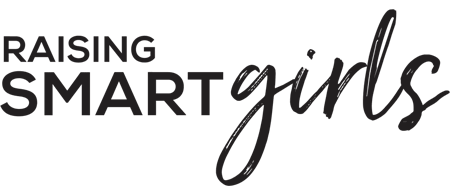How did you respond the last time you stubbed your toe, got cut off in traffic, or dealt with a disobedient child? Don’t worry – if you’re not exactly proud of your reactions in those moments, we can all relate. Sometimes our emotions get the best of us, causing us to respond inappropriately. As adults, we know cursing the bed for a stubbed toe, glaring at an aggressive driver, or snapping at a loved one are unproductive responses. We tend to blame our poor behaviors on the many stresses in our daily lives, but we should actually have the maturity to self-regulate our emotions. Children, on the other hand, cannot be expected to self-regulate their emotions if they’ve never been taught how to do so. When an accidental bump from a sibling or a loss in a game of Monopoly turns into tears, anger, or pouting, we are quick to criticize or reprimand. Just as we don’t expect a four year-old to do multiplication before she has learned the difference between the numbers seven and eight, why do we expect a child to be conscious and considerate before she has learned how to identify and manage her stresses and impulses?
Social-Emotional Learning (SEL) is a teaching strategy that aims to help children build emotional intelligence. By giving children the tools to identify and navigate their emotions and the effects of these emotions on their peers, family and the community, SEL hopes to develop individuals who are both self and socially aware.
Social-Emotional Learning (SEL) is a teaching strategy that aims to help children build emotional intelligence.
This idea of empowering students with emotional self-awareness was first implemented in several under-performing schools in New Haven, Connecticut, with positive outcomes. The results helped stimulate funding, research, and further implementation. In 1994, CASEL (Collaborative for Academic, Social, and Emotional Learning) was formed and became the prominent practitioner of SEL in academic and educational settings. However, it was the 1995 publication of Daniel Goleman’s now seminal book, Emotional Intelligence: Why It Can Matter More Than IQ that brought many of these ideas to a mainstream audience.
The five core competencies of SEL are:
- Self-awareness: understanding one’s own strengths and limitations.
- Self-management: managing stress and being self-motivated.
- Social awareness: being open and understanding of others’ perspectives.
- Relationship skills: communicating effectively, resolving conflicts constructively, resisting negative social pressures, and seeking help when needed.
- Responsible decision-making: making ethical choices about personal behavior.
Outcomes of SEL Learning
In 2011, Child Development Journal published the results of an extensive survey of over 200 SEL school programs. The study was the first of its kind and showed that students who practiced social-emotional learning in their classroom or school showed increased academic performance, increased rates of graduation and college attendance, decreased rates of drug use, and decreased disciplinary action. In short, students exposed to SEL curriculum in grade school were not only better versed in pro-social behavior but also showed academic progress. A follow-up study published in 2017 showed similar positive outcomes for kids in all grades.
In short, students exposed to SEL curriculum in grade school were not only better versed in pro-social behavior but also showed academic progress.
How is SEL being applied in schools
Teachers understand that learning is inhibited when students are struggling emotionally; if students are going to thrive, their emotional needs have to be met first. SEL in the classroom manifests in numerous ways, from the simple practice of focused breathing to large-scale social service projects in the community. SEL may also include addressing social justice issues, such as bias and bullying, and/or personal experiences through role-playing, journal writing, one-on-one or group sharing, guided meditations, and student-guided conflict resolution. Teaching coping skills is also a main area of SEL focus during this time when numbers of students struggling with anxiety and depression are at an all-time high. For more on what SEL looks like in the classroom, visit the Berkley Public School’s SEL toolbox.
Like most behavior, SEL should be modeled by the adults first. Demonstrating patience, listening, and empathy for your kids makes it easier for you to expect the same in return.
How can you apply SEL principles at home?
SEL relies heavily on the fact that it radiates outward from the classroom and into the home and community. Parents and guardians can utilize SEL techniques for themselves and the whole family, reiterating school practice and thus benefiting from a more emotionally intelligent home. Like most behavior, SEL should be modeled by the adults first. Demonstrating patience, listening, and empathy for your kids makes it easier for you to expect the same in return.
In conclusion, know that it takes a combined effort to grow children who are emotionally prepared to enter the world. It takes a conscious effort to intentionally focus on emotional learning, but it could potentially have a great impact on society as a whole.
For more on bringing SEL into the home, check out Parent’s Resource Guide to Social and Emotional Learning, CASEL’s Top 10 Books for Parents or this short video made for parents.

